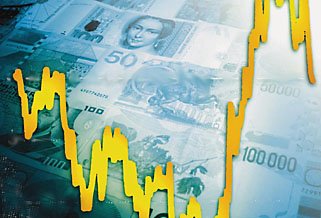Developing A Sound Forex Trading System
By: Bret Freak
Before going head first into trading the forex market, you may want to consider whether or not your forex trading system is actually based on sound concepts that will make you money over the long term. The most important aspect of your forex trading system should be the expectancy it produces. The expectancy of your trading system will give you an idea of how much you could expect to make over a certain period of time. This is explained further below.
Although you should aim at producing a high expectancy trading system, you should also consider exactly what your system is made up of. Most traders would agree that your trading system shouldn’t just be composed of mainly ’lagging’ technical indicators, but rather include ‘leading’ indicators such as price action, and chart patterns.
The Mathematics Of A Trading System
The whole point of a forex trading system is to make you as much profits as possible while keeping your risk down to an absolute minimum. To determine whether or not your trading system does this, a few mathematical calculations can be made to determine how much your system will make on average, over a period of time. This is often referred to as the ‘Expectancy’ of a system.
To calculate the expectancy of your trading system, you will need to take into account the following:
1. How often is your system correct? 2. How much are your profits compared to your losses? 3. How often are you able to trade your system? And 4) What does it cost to trade?
The following is an example taking these factors into account to determine its expectancy. Assuming the following:
1. The system is correct 70% of the time. 2) On average your profits are 2 times the amount you loose (make 80 pips, loose 40 – assume spread cost is taken into account). 3) you are able to trade 3 times per week.
The formula to calculate expectancy is:
(probability of a win × average win) less the (probability of a loss × average loss) × opportunity
Using the above values we would conclude:
(0.70 × 80 pips) minus (0.30 × 40 pips) × 3
= 132 pips. This means you could expect to make on average 132 pips every week.
Combining Leading & Lagging Indicators
So why include leading indicators in your trading system? The fact is, leading indicators have more predictive power, and can predict market moves before they occur. Lagging indicators cannot do this, however they can still complement other leading indicators. Some well known leading indicators include: pivot points, chart patterns, fibonacci retracements, and candlestick patterns.
In fact candlesticks are probably one of the most powerful leading indicators, since you are observing price action itself. Traders around the world have found that candlesticks can add an extra dimension to their trading system. The reason for this can be largely contributed to Steve Nison’s book Japanese Candlestick Charting Techniques. Here is a quote from the book:
“If you are a seasoned technician, you will discover how joining Japanese candlesticks with your other technical tools can create a powerful synergy of techniques.”
Of course there are many different ways you can incorporate the use of leading indicators in your forex trading system. Here I have aimed at giving you a taste of what is possible. I also recommend that you check out investopedia’s lesson on how to develop a medium term forex trading system. This lesson also puts forward some interesting concepts which include combining leading indicators with other technical tools.
Conclusion
By including the use of leading indicators in your trading system, you will be able to add an edge to your system that will enable you to catch trends earlier, and hence make more money. And by understanding the basic mathematics involved in determining a trading systems profitability, you should be able to determine whether or not you have a good forex trading system.
Article Source: http://www.articlecafe.net


No comments:
Post a Comment